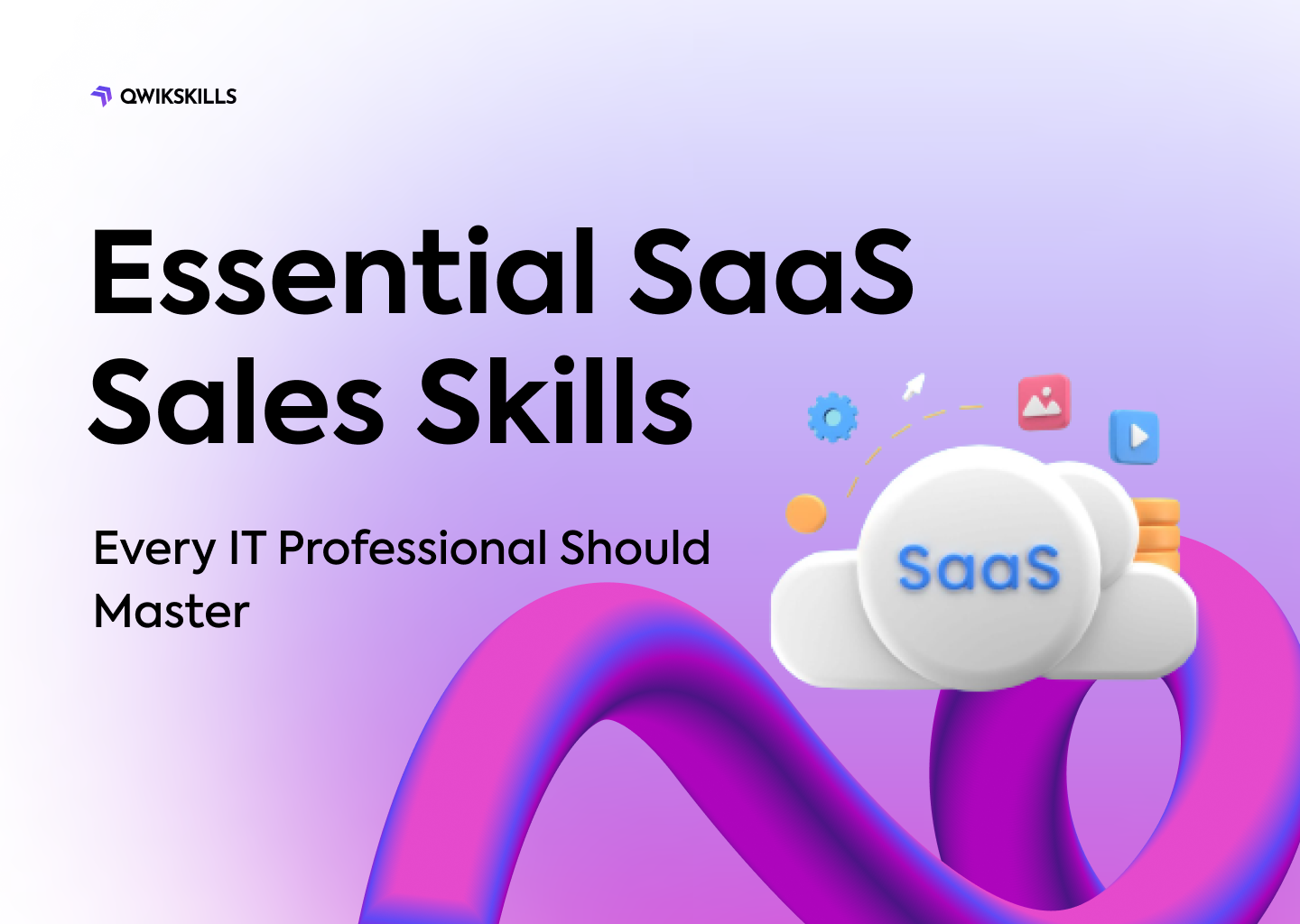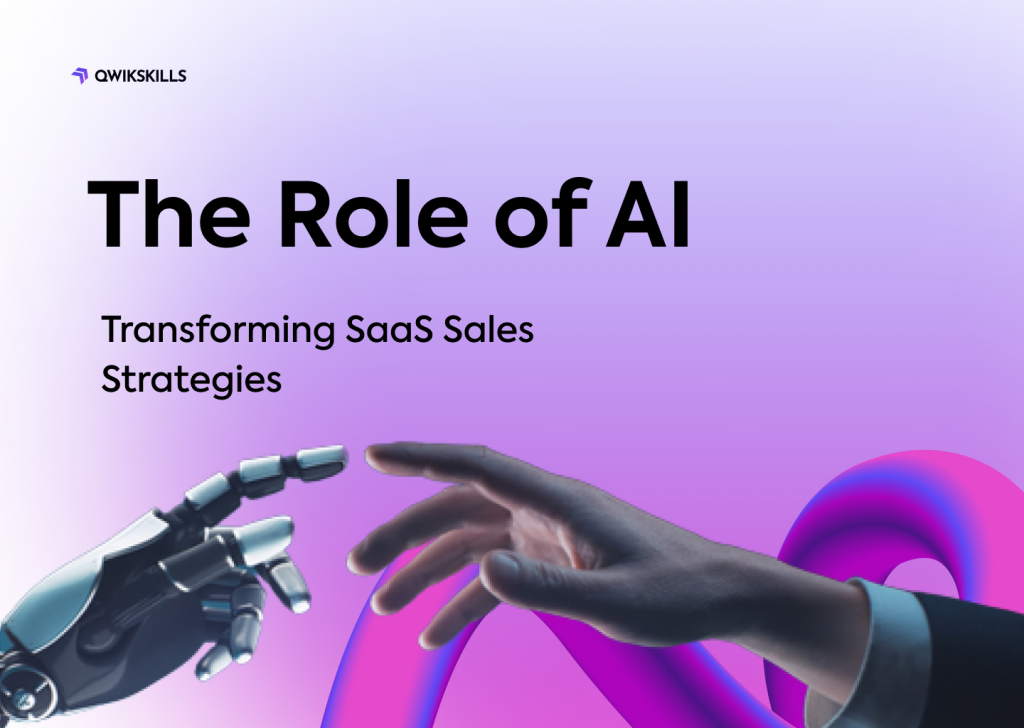 Essential SaaS Sales Skills Every IT Professional Should Master
Essential SaaS Sales Skills Every IT Professional Should Master
Introduction
Welcome aboard, tech enthusiasts! Let’s talk about all things SaaS sales today. In this rapid digital world, “software as a service” sales – or SaaS sales, as we like to call it, holds a pivotal role in the IT sales ecosystem. Mastery of SaaS sales skills can take your professional growth to new heights. But what exactly is SaaS sales? And why is it so crucial for IT professionals? Let’s dive in!
Definition of SaaS Sales
SaaS sales is the process of selling “software as a service” products. These are software applications that customers can access via the internet, paying typically on a subscription basis, rather than purchasing the whole software to install on their machines. SaaS models can be found in a myriad of applications, from office software, email, and customer relationship management, to more niche industry-specific tools.
Importance of SaaS Sales Skills for IT Professionals
IT Professionals, lend us your ears (or rather, your eyes)! Understanding and excelling in SaaS sales delivers a multitude of advantages:
- Enhances your knowledge about the industry’s latest trends and innovations
- Fosters critical skills to deal with tech-savvy clients
- Heightens your ability to strategize and pitch sales according to consumer needs, thus maximising revenue growth.
It’s clear now, isn’t it? Whether you’re chasing the next big promotion or just trying to bag a coveted client, SaaS sales skills can be your secret weapon! Stay tuned as we delve deeper into these essential skills in the upcoming sections.
Understanding the SaaS Sales Process
SaaS, or Software as a Service, sales is a unique beast in the world of IT sales. With software being delivered via the cloud and often on a subscription basis, the sales process differs from traditional methods. Understanding this process is fundamental to achieving success.
Overview of the SaaS Sales Funnel
In the SaaS sales funnel, each stage has its importance. Just to visualize, imagine a funnel: broad at the top and narrow at the bottom. The initial phase is all about lead generation, attracting potential customers or leads to your software. Then we have the lead nurturing stage, where you follow up, provide information and keep these potential customers engaged. The next step is conversion, where leads become actual paying customers, or subscribers in the case of SaaS. Finally, there’s retention and upsell – keeping customers satisfied and selling them additional features or services.
Key Stages in the SaaS Sales Process
- Lead Generation: finding potential customers who may have an interest in your software.
- Lead Nurturing: providing these potential leads with valuable content and support to keep them engaged.
- Conversion: turning these potential customers into actual sales or subscribers.
- Retention: keeping your customers satisfied and loyal.
- Upselling: Introducing existing customers to advanced features or pricier plans they might need.
By grasping these stages, you can prioritize your actions, optimally manage your time and resources, and focus your efforts where they will make the most impact. It’s about being efficient and effective!
Building Rapport with Potential Customers
In the fiercely competitive world of SaaS sales, building a rapport with potential customers sets the foundation for a fruitful long-term business relationship. For IT professionals, rapport building isn’t just about making people like you; it’s also about showing prospects that you understand their needs, can deliver effective solutions, and are genuinely interested in their success.
Importance of Building Trust and Relationships
In the domain of software-as-a-service, trust and relationships are absolute game-changers. A customer who feels connected and confident in their relationship with you is more likely to be receptive to your suggestions and advice, increasing the likelihood of a successful sale. They’re also more likely to be repeat customers and advocates for your product or service in the future. Here are a few key aspects of trust-building:
- Transparency: Be honest and open in your communication.
- Expertise: Demonstrate your knowledge and skills to build confidence in your abilities.
- Consistency: Follow through on your promises and be reliable.
Tips for Effective Communication and Active Listening
Effective communication facilitates understanding, aids in problem-solving, and helps cultivate a harmonious relationship. And, a significant part of this is active listening. This involves more than just hearing what the prospective client is saying. It’s about understanding their needs, concerns, and expectations. Here are a few tips:
- Ask questions: Encourage open-ended conversations that unearth valuable information about the potential client’s needs.
- Show Empathy: Show genuine concern for their issues and offer helpful solutions.
- Body Language: Non-verbal cues such as maintaining eye contact and nodding signal that you’re actively interested and understanding.
- Paraphrase: Restate what the client said to ensure you’ve understood it correctly.
Product Knowledge and Technical Expertise
In the realm of SaaS sales, having a deep understanding of the product and the IT landscape is instrumental.
Understanding the SaaS product inside and out
At the top of the list is a comprehensive knowledge of the product you are selling. This involves more than just knowing its features and benefits. It’s about understanding how it works, how it can resolve the unique problems your prospects face, and the technical components that make it all come together. This knowledge not only enables you to explain the product effectively but also allows you to counter objections and alleviate any concerns your prospects might have.
- Know your product’s features and advantages
- Understand the solutions it offers to problems
- Familiarize yourself with the technical components of the product
Staying updated with industry trends and technologies
Next, staying current with industry trends and emerging technologies is vital. This not only helps maintain your position as a knowledgeable expert but also enables you to predict future developments and understand how they might affect your product and its potential customers. It’s about forecasting where the market is headed, what businesses will need, and how your product can fill that gap.
- Stay current with evolving industry trends and technologies
- Understand how these changes might impact your product and prospects
- Anticipate future market trends and adapt accordingly.
Identifying and Qualifying Leads
Succeeding in the SaaS sales arena requires efficient and effective strategies for both identifying and qualifying your leads. These processes are crucial in ensuring that you are spending your resources on potential clients who have the highest probability of becoming profitable customers.
Strategies for Lead Generation in SaaS Sales
As an IT professional, there are a multitude of avenues to explore in order to generate promising leads. You can leverage social media platforms, webinars, or content marketing to reach your target audience. Additionally:
- Use SEO to improve your ranking in search results and increase visibility.
- Offer free demos or trials of your service.
- Participate in industry events and build your network.
Techniques for Qualifying Leads Effectively
Once you have identified potential leads, the next critical step is to qualify them. Some proven techniques include:
- Evaluating their need for your product.
- Assessing their budget and decision-making authority.
- Considering the timeline for their purchase decision.
- Factoring in their level of engagement with your brand.
Delivering Effective Sales Presentations
Leveraging your product knowledge to deliver convincing sales presentations is crucial for success in SaaS sales. Presentations need to be engaging, tailored to the specific needs of the prospect, and showcase the unique value proposition of your SaaS product.
Elements of a Successful SaaS Sales Pitch
A successful sales pitch should embed several key elements:
• A deep understanding of the prospect’s needs and challenges.
• The definite ways your SaaS solution can address these needs.
• Clear differentiation from competitors in the market.
• Concrete data and examples to build confidence and credibility.
Remember, a good sales pitch is not just about selling a product, it’s about establishing a relationship, solving a problem, and delivering value.
Tips for Creating Impactful Presentations
Creating an impactful presentation depends on both content and delivery. Here are a few tips:
• Keep it concise and focused. Don’t overload your prospect with too much information.
• Be interactive. Encourage questions and engage in conversation.
• Use compelling visuals. Visually representing data or product features can be more effective than just verbal explanations.
• Practice, practice, practice. The more confident you are in your presentation, the more convincingly you can deliver it.
In the end, remember that your role as a SaaS sales professional isn’t just about making a sale, it’s about connecting, addressing, and ultimately delivering on the needs of your prospective clients.
Consultative Selling Approach
As an IT professional in SaaS sales, mastering the consultative selling approach is essential. In this technique, the seller acts more as a consultant, providing personalized solutions to the client’s needs instead of just focusing on pushing the product or service.
Understanding the Customer’s Pain Points and Challenges
To make a consultative selling approach effective, it’s crucial for you to truly understand your customer’s pain points and challenges. This involves thorough research, active listening, and insightful questioning. Invite your client to share their difficulties and objectives in their own words, and show empathy towards their situation. This will allow you to:
- Understand their business processes and where they’re experiencing difficulties.
- Identify the potential areas where your SaaS product can help.
- Build trust with your client, demonstrating that you care about their success and not just the sale.
Offering Tailored Solutions and Demonstrating Value
Once you understand the customer’s challenges, you are in a better position to offer tailored solutions. Show how your SaaS product or service can help solve their problems, enhance their processes, or meet their specific goals. Showcase real-world examples, utilize case studies or images, and use data points to make your solution tangible and credible.
Remember, demonstrating value goes beyond the monetary aspect. It’s about conveying how your software can improve efficiency, drive productivity, and help them stay ahead in an increasingly competitive digital landscape. This tactic will not only help close the sale but also foster long-term relationships, which is crucial in the SaaS sales environment.
Overcoming Objections and Handling Rejections
In the realm of SaaS sales, an essential skill to master is overcoming customer objections and handling rejections. This skill isn’t just about persisting despite refusals; it involves addressing customers’ concerns with empathy, and understanding, and pro-actively providing solutions to their possible queries or doubts.
Common Objections in SaaS Sales and How to Address Them
In SaaS sales, common objections might sound like “The product is too expensive,” “We’re already using a different tool,” or “We don’t have enough time to implement a new solution.” Responding confidently, succinctly, and effectively is critical to salvage such situations. Here’s what you can do:
• Validate their concerns: Acknowledge and empathize with the prospect’s reservations.
• Show value: Explain how your product can save them money, time, or effort in the long run.
• Offer a trial: A free trial can give hesitant prospects a risk-free way to evaluate your solution.
• Provide case studies: Share stories of how similar companies have seen success with your product.
Negotiation and Closing Deals
In the thriving universe of SaaS sales, negotiation and deal-closing abilities sit high up on the list of essential skills. Being proficient in these areas can mean the difference between success and stagnation in your IT sales career. So buckle up, as we delve into two important topics: successful negotiation strategies and effective tactics for closing deals.
Strategies for Successful Negotiation in SaaS Sales
There are several key strategies that can help you haggle like a pro in the SaaS marketplace.
• Understand your prospect’s needs and tailor your solutions to align with them.
• Leverage the value of your software and ensure your price reflects that value.
• Don’t be afraid to push back if you believe your offer delivers genuine worth.
• Be flexible and ready to adapt your methodology to each unique situation.
Applying these strategies can significantly enhance your negotiation game in the competitive arena of software as a service.
Tactics for Closing Deals and Securing Commitments
Once you’ve navigated the negotiation stage, it’s crucial to seal the deal effectively and secure your client’s commitment.
• Strong follow-ups: A personalized, engaging follow-up can truly differentiate you, leading to faster closures.
• Gain trust: Assure your prospect about the reliability of your product/service, and the post-sale support you provide.
• Overcome objections: Dive deep to unearth the cause of any hesitation, offer reassurances, and possibly alternatives.
With these skills at your fingertips, you’ll be braced to tackle any challenge that comes your way in the world of SaaS sales. Every IT professional aiming to maximize revenue and growth, take note!
Importance of adapting to changing market dynamics
As technology evolves, so does the face of SaaS sales. Understanding changing market dynamics and quickly adapting is not just an effective skill, but a necessity for any IT professional wanting to succeed in SaaS sales. This involves being aware of emerging tech trends, keeping up with changes in customer buying behaviours, and constantly recalibrating your sales strategies. Remember, in the fast-paced world of SaaS sales – adaptability is key!
Conclusion
In conclusion, acquiring expertise in SaaS sales is a strategic move for any IT professional. The fusion of AI with SaaS presents unparalleled opportunities, and by mastering the essential skills outlined in this blog post, you position yourself as a leader in this transformative field.
As you embark on this journey, consider enrolling in QwikSkills‘ WorkX Program, designed to elevate your SaaS sales skills. Seize the future of IT with confidence, armed with the skills needed to excel in the dynamic world of SaaS sales.



